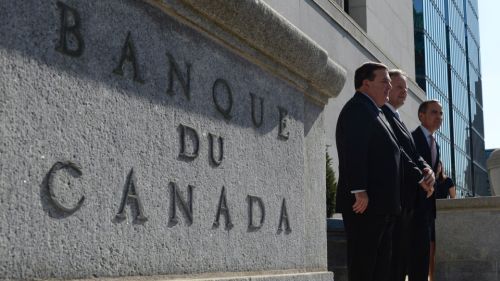
Canadians will have to set aside an unprecedented amount of their incomes to service debt repayments if interest rates return to normal levels, according to a new report from the Office of the Parliamentary Budget Officer.
“The financial vulnerability of the average household would rise to levels beyond historical experience,” said Jean-Denis Fréchette, the Parliamentary Budget Officer (PBO). His assessment was based on projections about interest rates, household debt, and debt servicing costs.
According to forecasts, if the Bank of Canada (BoC) were to raise the key interest rate from the current 0.5% to 3%, the average Canadian family would have to use 16.3% of their disposable income to service debt repayments by the end of 2021.
Canadians currently need 14.2% of their after-tax income to keep up with principal-and-interest payments. They’ve also never used more than 14.9% of their income to service debt, according to the PBO.
Here’s how much interest rates could rise over the next couple of years:
The BoC’s key interest rate
This interest rate affects most other interest rates throughout the economy, and when the BoC raises it, the cost of borrowing goes up for most Canadians. The BoC uses interest rate levels to keep inflation in check, as well as promote economic stability and employment.
With the Canadian economy heating up, the BoC said it’s thinking about finally lifting rates from historically low levels. The first hike could happen as soon as July, according to the Bank of Montreal (BMO). Economists from Caisse Desjardins also see the possibility of a rate hike as soon as next month.
The PBO projected the key interest rate to rise, from 0.5% today to 3% by mid-2020.
The interest rate on mortgage debt
This interest rate could climb from 2.9% to 4.8% by the end of 2021, according to the PBO. However, the vast majority of Canadians, who have fixed-rate mortgages, won’t feel the impact of higher rates until their loans are up for renewal. Meanwhile, for 4.8% of homebuyers, the interest on mortgage debt would still be below the nation’s long-term average of 5.4%, according to Fréchette.
Undaunted, Canadians will continue to acquire debt
Canadians will keep borrowing – for the time being at least – even if debt becomes more expensive. “We expect household indebtedness to increase due to continued gains in real house prices and elevated levels of consumer confidence,” Fréchette said.
Consequently, by the end of next year, Canadians are likely to owe $1.80 for every $1 of disposable income, up from the current $1.74. The PBO expects the nation’s household debt to stabilize after 2018.
In short, with rates set to rise, households are on course to become more financially stretched than they’ve ever been before.



